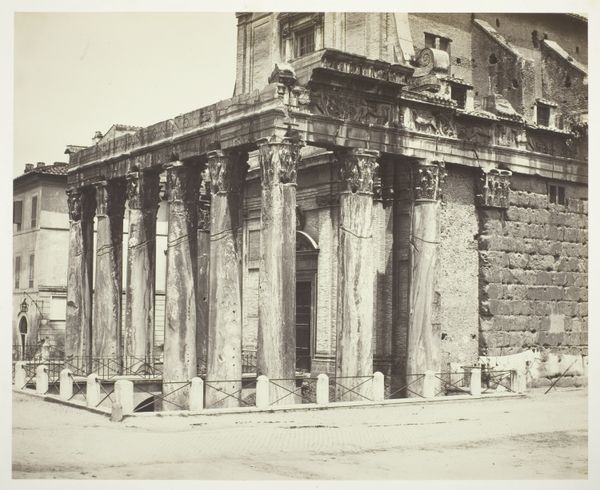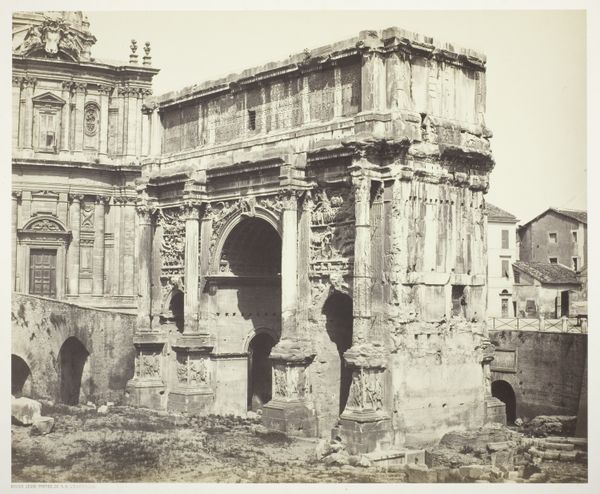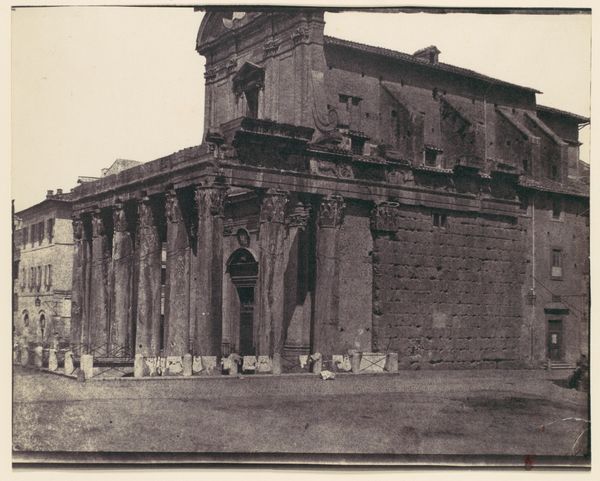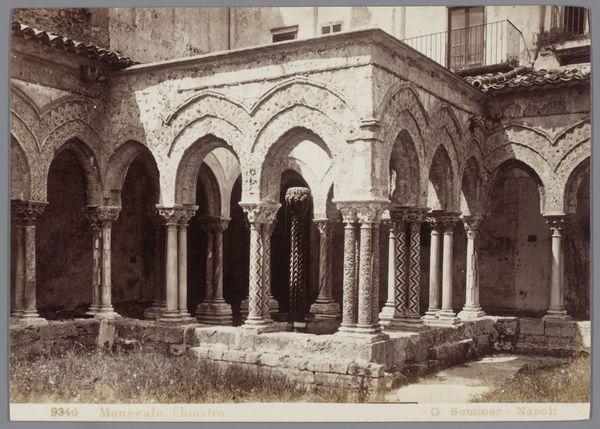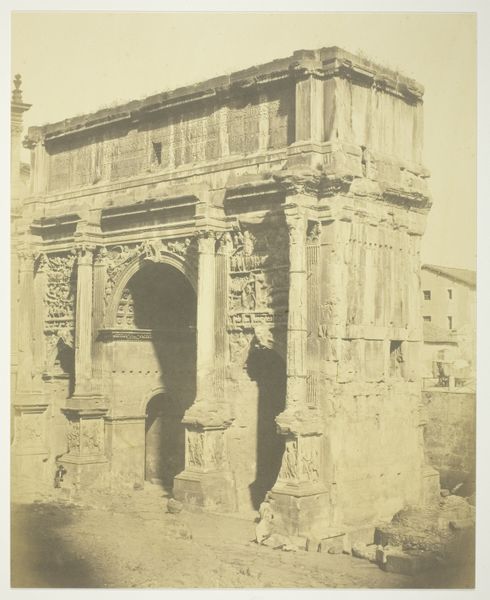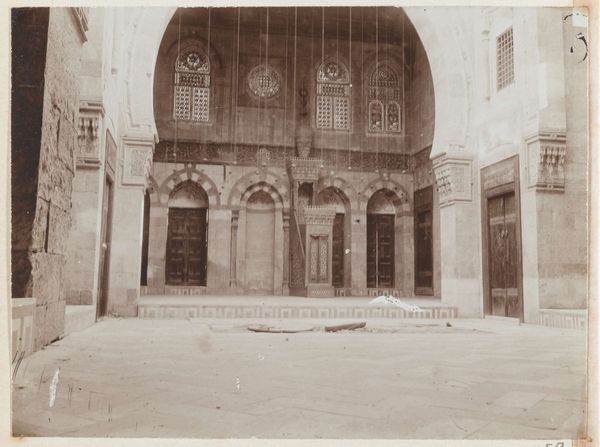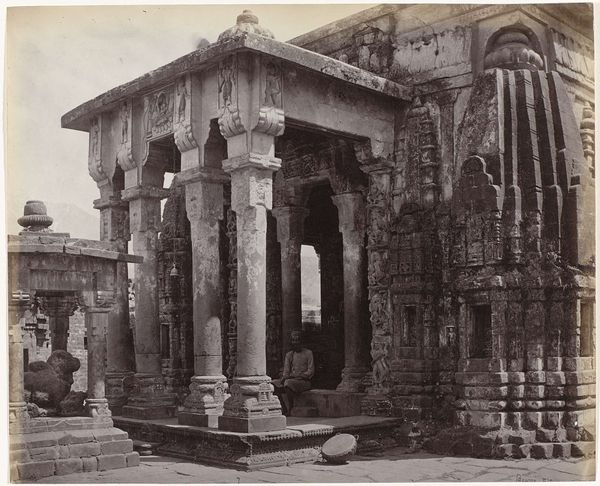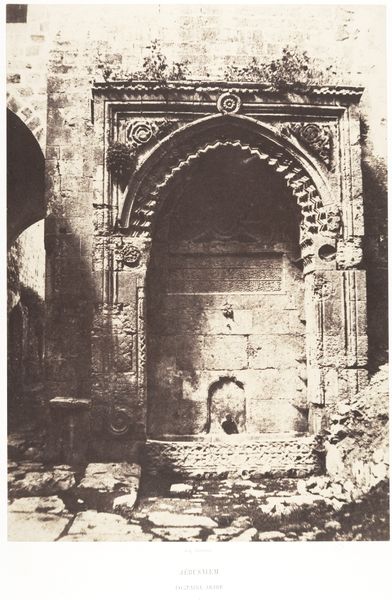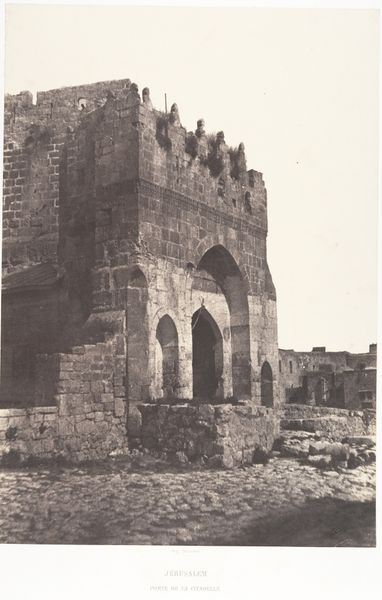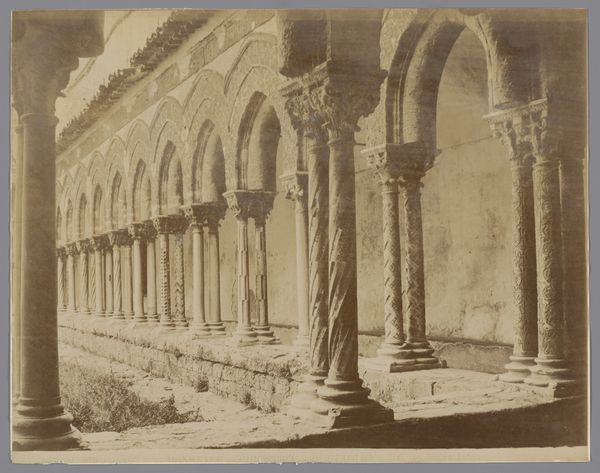
print, photography, site-specific
# print
#
landscape
#
photography
#
historical photography
#
ancient-mediterranean
#
site-specific
#
19th century
#
statue
Dimensions: height 276 mm, width 340 mm
Copyright: Rijks Museum: Open Domain
Curator: There's a striking stillness in this print. The play of light and shadow almost renders the scene dreamlike. Editor: Indeed. What we have here is a photograph titled "Binnenplaats van het Radjapaleis te Tanjore in India," or "Courtyard of the Rajah's Palace in Tanjore, India." It was captured sometime between 1858 and 1860 by Linnaeus Tripe. These early photographs provide a unique lens through which we can view 19th-century colonial India. Curator: That’s what captivates me, this glimpse into another time and place. Look at the architecture; the eye is immediately drawn to the ornate carvings depicting figures on every surface of the palace walls and columns. It speaks volumes about the artistic and cultural heritage of the region. Editor: Absolutely. Consider the symbolic importance of palaces in Indian society; they weren't just residences but the epicenter of power, artistry, and social order. A photographer like Tripe, working under colonial auspices, had a clear agenda: to document, classify, and ultimately, to possess the visual record of the land. Curator: It is an intimate yet distant view. This image offers so much rich historical context; you have to wonder about Tripe's intentions behind the camera. What narratives were promoted—or perhaps even suppressed—through his photographic choices? Editor: Those are very good questions to ask, considering the complex relationship between colonizer and colonized. He has a very unique perspective on the Rajah Palace, and on ancient artistic elements in that period. What cultural continuities are visible, despite British rule? What symbols persist? It offers a glimpse into something far bigger than what the photographer was focusing on, right? Curator: Precisely. When looking at Tripe’s work, it serves as a potent reminder that the photographic image can never be neutral. The photographer, the subject, and the viewer are all interconnected. This opens a crucial dialogue between representation and power. Editor: Well said. A single photograph, pregnant with untold stories, caught in a time capsule of colonial India. It holds a complex history within its delicate sepia tones, to say the least.
Comments
No comments
Be the first to comment and join the conversation on the ultimate creative platform.
